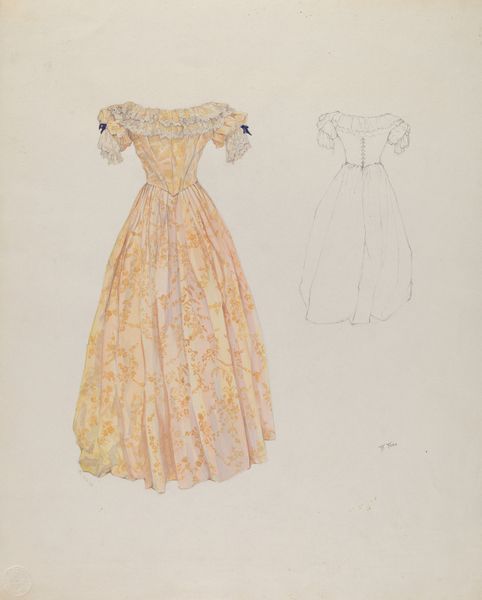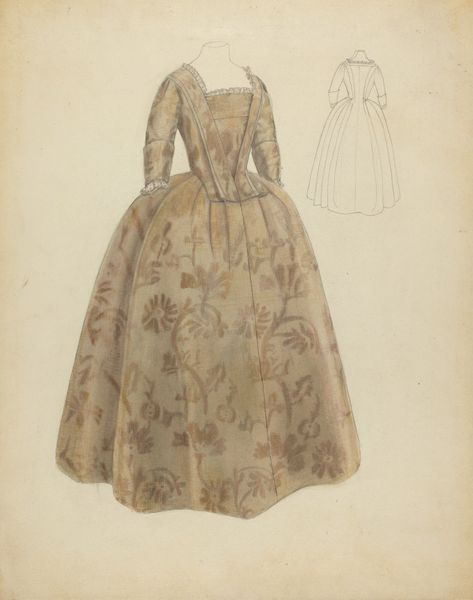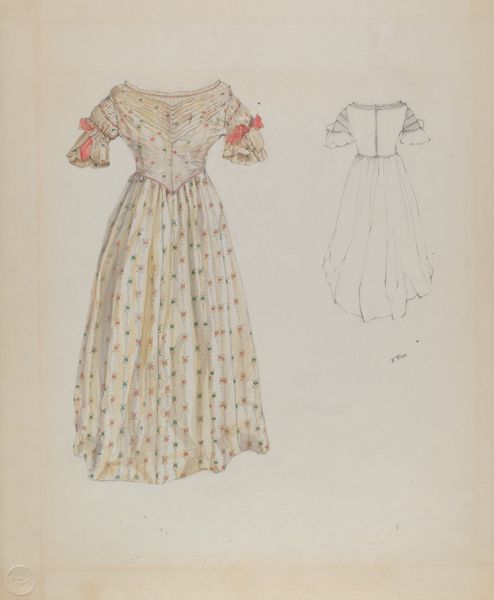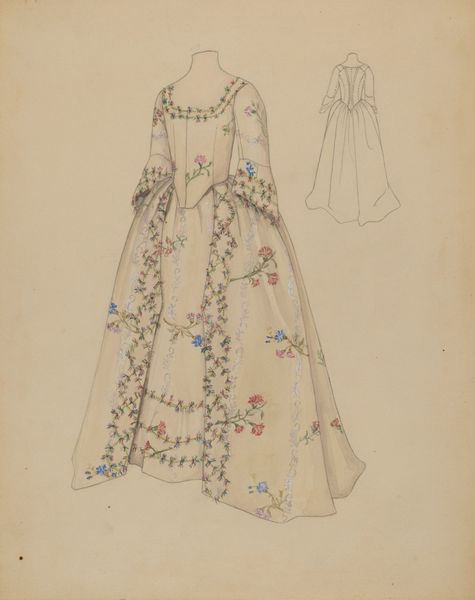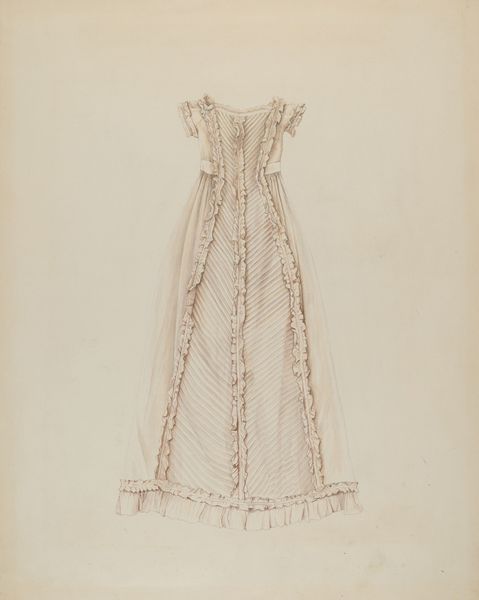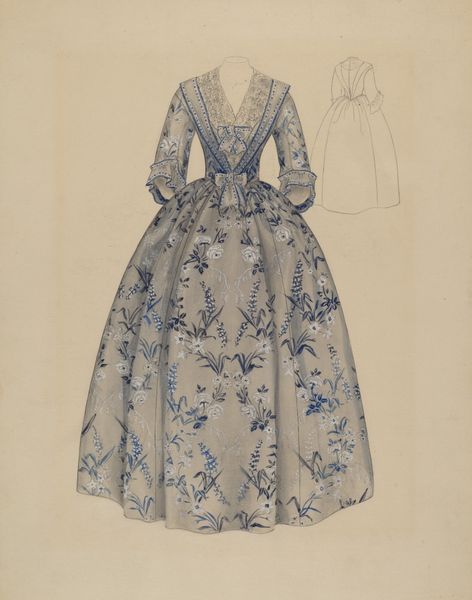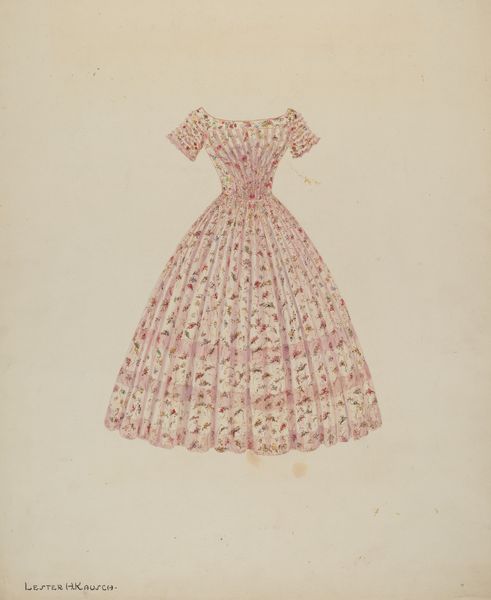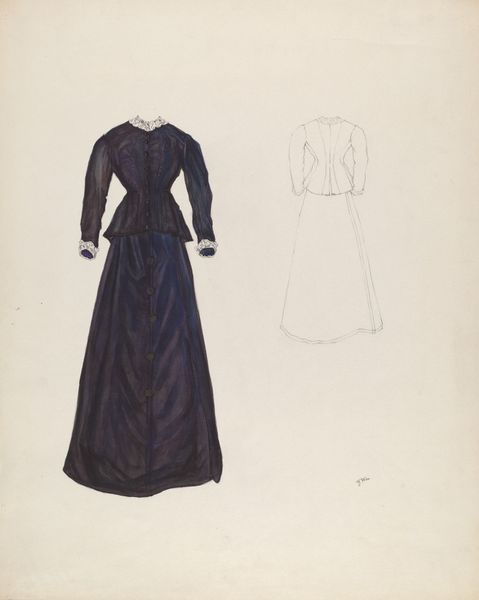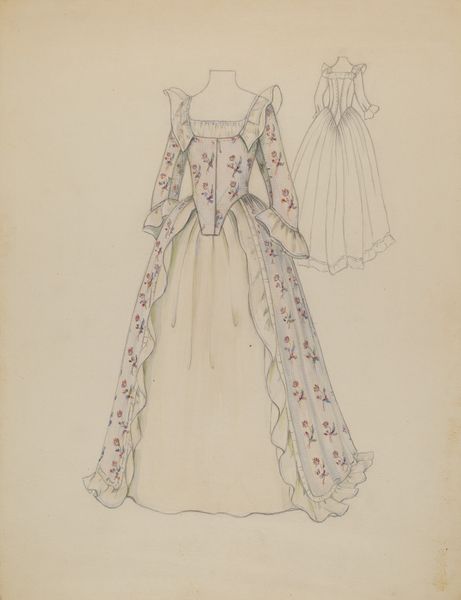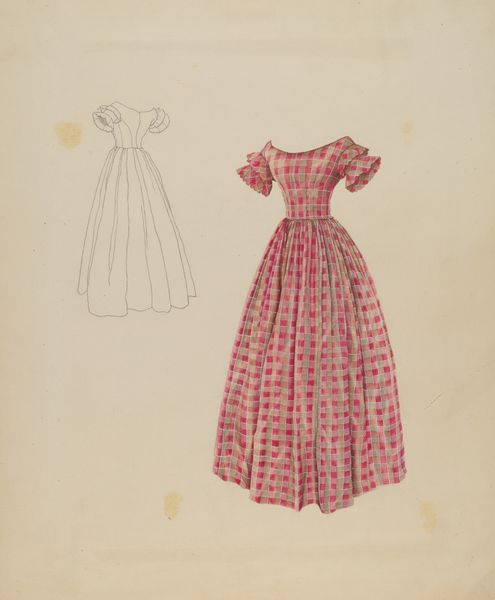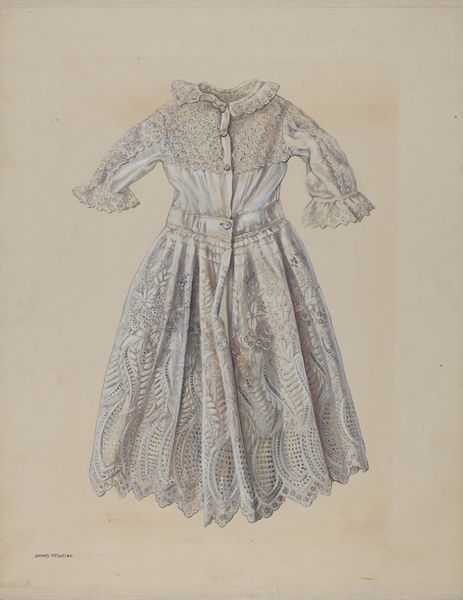
drawing, acrylic-paint, paper, pencil, graphite
#
portrait
#
drawing
#
pencil sketch
#
acrylic-paint
#
paper
#
pencil
#
graphite
#
watercolour illustration
#
fashion sketch
#
sketchbook art
#
watercolor
Dimensions: overall: 44.5 x 36.5 cm (17 1/2 x 14 3/8 in.)
Copyright: National Gallery of Art: CC0 1.0
Curator: This lovely piece is a drawing titled "Dress," created around 1937 using graphite, pencil, and watercolor on paper. It seems to depict a fashion sketch. What strikes you first about it? Editor: Its delicacy, definitely. The lines are so light, almost ephemeral. And the washes of color create a soft, almost dreamlike quality. There's a certain elegance to the garment itself. Curator: Absolutely. Considering the historical context, fashion design during the late 1930s was heavily influenced by both economic hardship and the glamour of Hollywood. This dress, with its long sleeves and intricate floral details, perhaps speaks to a desire for refinement and escape amidst social uncertainties. Editor: The composition is interesting too. We have two views: a detailed frontal depiction and a more schematic rear view. This creates a visual dialogue—almost like contrasting realities or intentions embodied in the dress. I would suggest to think on what purpose the second one had in the creator´s mind. Curator: Good observation. The use of floral motifs also invites consideration. Flowers often symbolize femininity, fragility, and beauty, but also ephemerality, inviting conversation around constructions of femininity. Editor: I agree. The floral ornamentation seems carefully applied, enhancing the structural components of the dress without obscuring it. It could easily fall into mere decoration but here, it defines the form. The attention to texture is quite remarkable for a preparatory drawing. Curator: We can see how clothing also functions as a symbol of identity. The act of adorning oneself has always been tied to how we perform in social, cultural, or gender roles. In the 30's that meant following the imposed idea of feminine identity. Editor: So, it's more than just a sketch; it is a dialogue. A negotiation between utility and aspiration, form and ornament, restraint and flourish that is captured by the artist in these strokes and shades. I do see some strong connections with semiotics that could be explored. Curator: Exactly. Understanding this intersection— the object itself, its representation, and its role in societal narratives is crucial to see it as art. Thanks for highlighting those points. Editor: And thank you. Seeing it as a confluence of line, light and form helped me appreciate that deeper story, too.
Comments
No comments
Be the first to comment and join the conversation on the ultimate creative platform.
